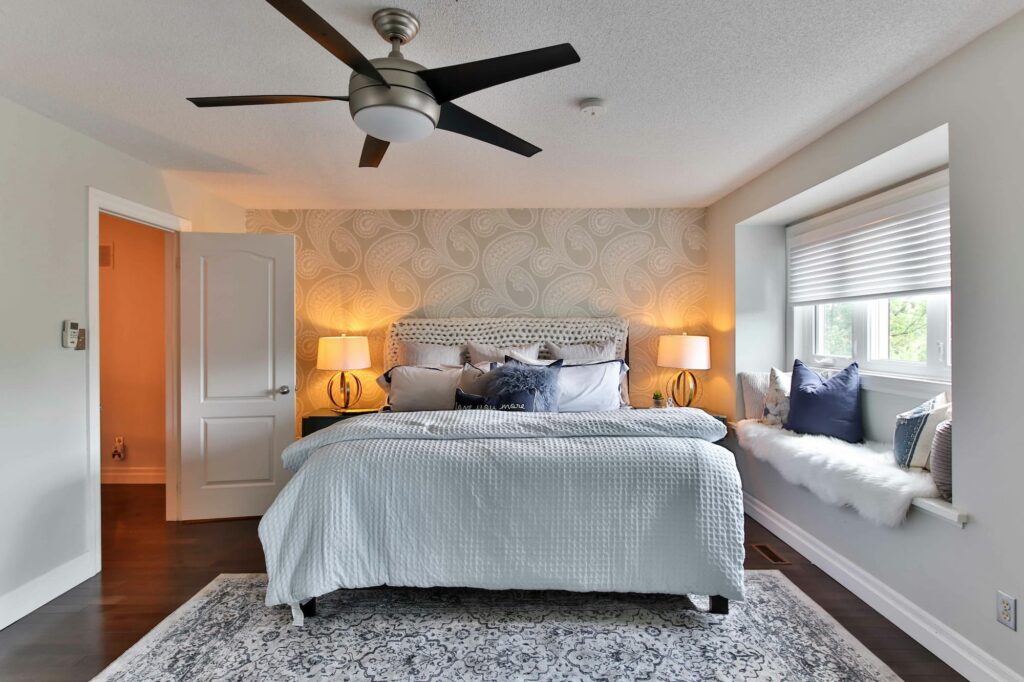I cannot tolerate heat. I literally have my air conditioning running in my bedroom even in the winter, and a breeze or a fan isn’t enough for me. Understandably, my electric bill is high. However, for most people, there are ways to keep your home cooler without needing to have high air conditioning bills. Here are some suggestions how.

Summer’s scorching temperatures can make your home feel like an oven, sending energy bills soaring as air conditioners work overtime. But keeping your living space comfortable doesn’t have to break the bank. With some strategic approaches and simple home modifications, you can significantly reduce indoor temperatures without the hefty price tag of constant air conditioning.
The key to affordable summer cooling lies in understanding heat transfer and implementing a combination of methods that work with your specific home layout. By blocking heat before it enters, removing accumulated warmth efficiently, and creating air movement, you can transform your living environment while keeping costs under control.
Strategic Window Management
Windows are major culprits in heat gain, accounting for up to 30% of unwanted heat. Start by identifying which windows receive direct sunlight during the hottest parts of the day. For these windows, external shading solutions like awnings can block up to 90% of solar heat before it reaches the glass.
Inside, thermal or blackout curtains provide another defensive layer. These specialized window treatments reflect heat back outside while insulating your interior space. For maximum effectiveness, keep curtains closed during peak sunlight hours, typically between 10 AM and 4 PM.
Window films offer another affordable option, with modern versions providing heat rejection without darkening your space significantly. These transparent films can block up to 70% of heat while allowing natural light to filter through, making them perfect for rooms where you want both coolness and brightness.
Create Cross Ventilation
Natural airflow remains one of the most energy-efficient cooling methods available. To maximize cross ventilation, identify the prevailing wind direction in your area and open windows strategically to create a path for air movement through your home.
For best results, open windows on opposite sides of your home, with the upwind windows opened less than the downwind windows. This creates a venturi effect that accelerates airflow through your living space. Adding window fans to this setup can enhance the effect, particularly when placed in downwind windows facing outward to pull air through your home.
During cooler nighttime hours, open multiple windows to flush accumulated heat. Close them early in the morning before temperatures begin to rise, essentially trapping the cooler air inside your home for several hours.
Optimize Your Ceiling Fans
Ceiling fans create a wind-chill effect that can make a room feel 4-8 degrees cooler without changing the actual temperature. The wooden ceiling fans from Hunter are particularly efficient options, combining elegant design with energy-saving performance. Unlike air conditioning, which can cost upwards of 50 cents per hour to operate, ceiling fans typically cost just pennies.
Ensure your fans are rotating counterclockwise during summer months to push air downward, creating that cooling breeze effect. Many people don’t realize that the direction switch on ceiling fans should be adjusted seasonally for optimal performance.
Remember that fans cool people, not rooms, by facilitating evaporation of moisture from your skin. Turn them off when rooms are unoccupied to save even more energy.
Strategic Landscaping
Your yard can contribute significantly to home cooling. Strategically planted deciduous trees on the south and west sides of your home provide natural shade during summer while allowing warming sunlight during winter months after they shed their leaves.
Even if you’re not ready for major landscaping, potted plants on patios, balconies, or near windows can provide localized cooling through transpiration—the process by which plants release water vapor. This natural cooling effect can noticeably reduce temperatures in adjacent areas.
For immediate results, consider installing trellises with fast-growing vines like morning glory or moonflower near problem windows. These provide shade within a single growing season while adding visual appeal to your home exterior.
DIY Cooling Methods
Several homemade solutions can provide targeted cooling when needed. A bowl of ice placed in front of a fan creates a simple evaporative cooler that works remarkably well in low-humidity environments. As air passes over the ice, it cools and circulates through your space.
Damp sheets hung over windows or doorways in the path of a breeze provide evaporative cooling as air passes through them. This ancient technique remains effective, particularly when humidity levels are moderate to low.
For personal cooling, keep a spray bottle filled with water in the refrigerator. A light mist on your face, neck, and wrists provides immediate relief during particularly hot moments.
Minimize Internal Heat Generation
Many everyday activities add significant heat to your home. Cooking, for instance, can raise kitchen temperatures dramatically. During summer months, embrace outdoor grilling or use countertop appliances like slow cookers and microwaves that generate less heat than conventional ovens.
Laundry management also impacts home temperatures. Run washing machines with cold water when possible, and consider air-drying clothes outdoors instead of using dryers, which pump considerable heat into your home.
Electronics and lighting generate surprising amounts of heat. Replace incandescent bulbs with LEDs, which produce 90% less heat while using significantly less electricity. Unplug chargers and devices when not in use, as even standby modes generate warmth while consuming electricity.
Improve Attic Ventilation
Poorly ventilated attics can reach temperatures exceeding 150°F during summer, radiating heat downward into living spaces. Adding or improving attic ventilation can substantially reduce this heat transfer.
Ridge vents combined with soffit vents create natural convection that draws hot air out of attic spaces. For homes without these features, affordable solar-powered attic fans provide an energy-neutral solution, pulling hot air out during the sunniest (and typically hottest) parts of the day.
Insulation Upgrades
While typically associated with winter energy savings, proper insulation plays a crucial role in summer cooling as well. Adding insulation to attics, walls, and crawl spaces helps maintain consistent indoor temperatures year-round by preventing unwanted heat transfer.
Reflective insulation or radiant barriers installed in attic spaces can reflect up to 97% of radiant heat, dramatically reducing heat gain through roofs. These metallic-faced materials are relatively inexpensive and can be installed as a DIY project in many homes.
By implementing these budget-friendly strategies, you can significantly reduce your home’s temperature without relying exclusively on costly air conditioning. Start with the methods that make most sense for your specific situation, then gradually add others as time and resources permit. The resulting comfort and energy savings will make summer more enjoyable while keeping your budget intact.



